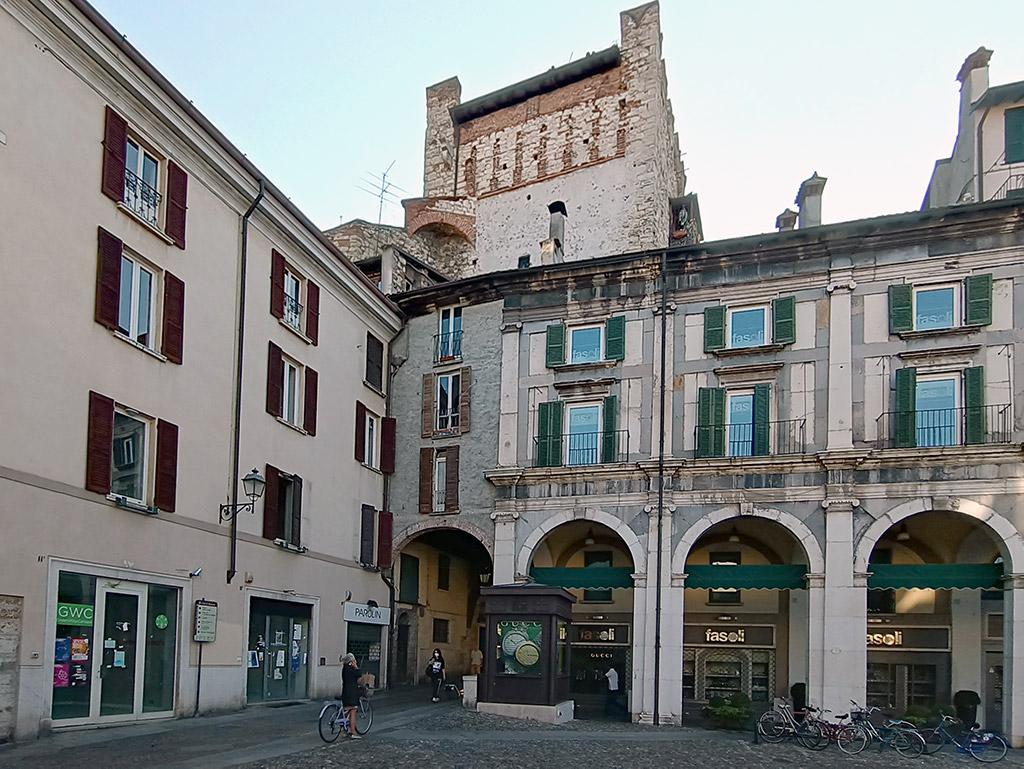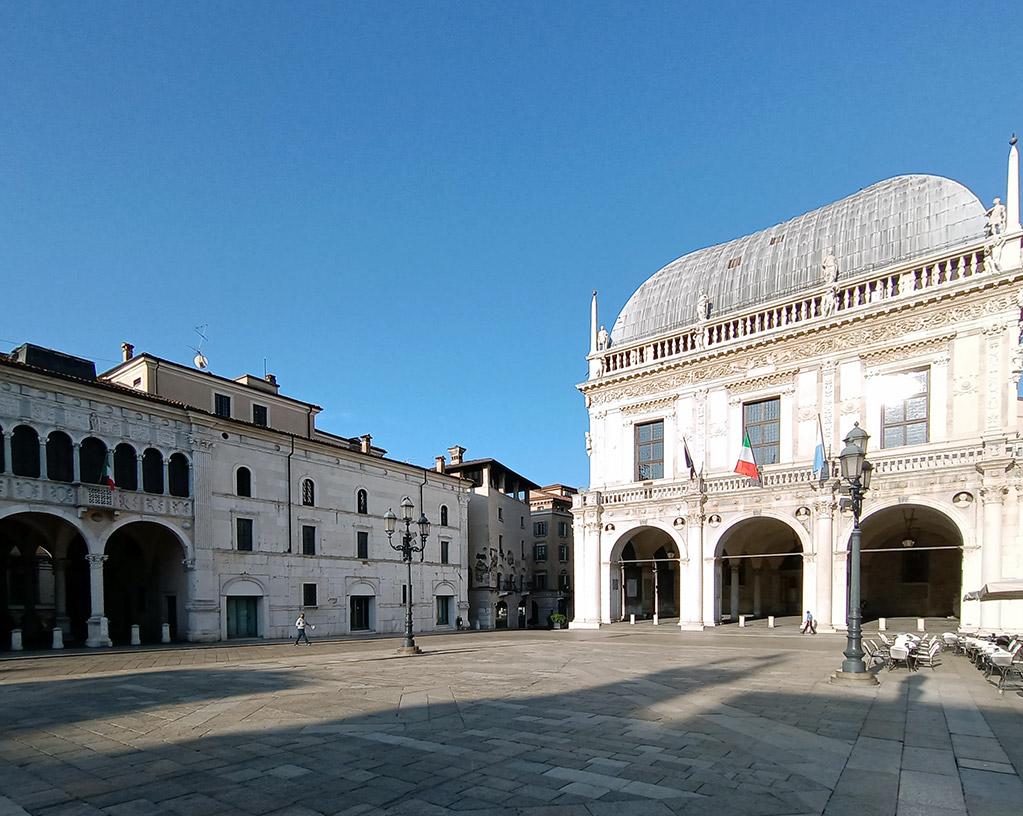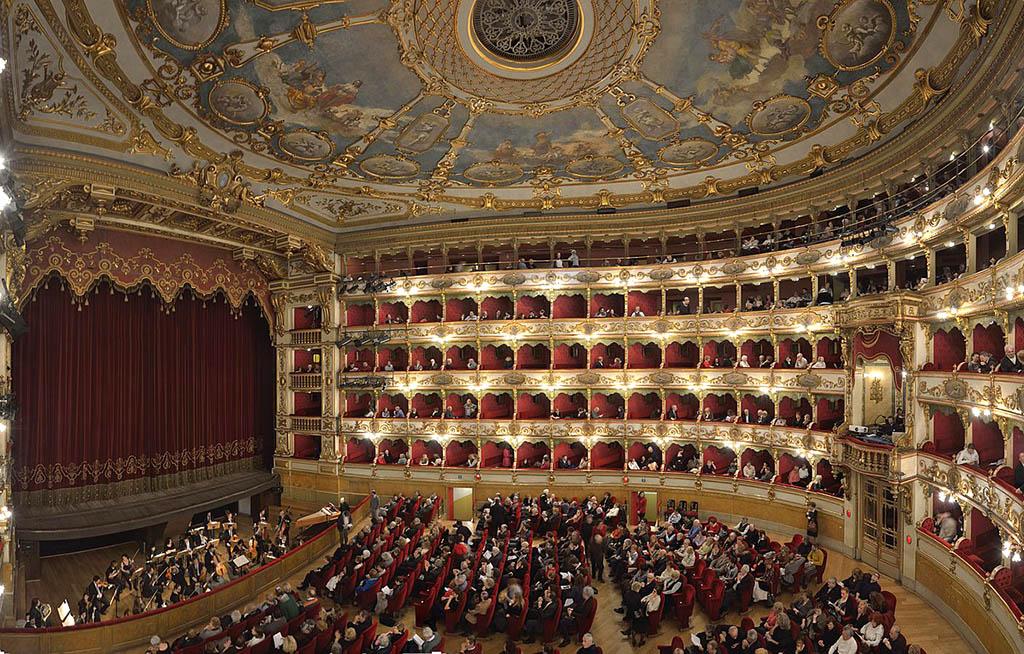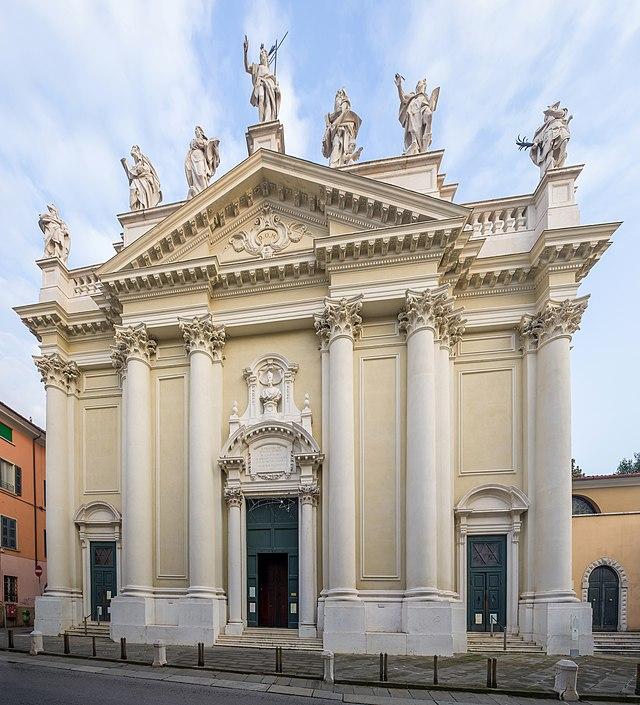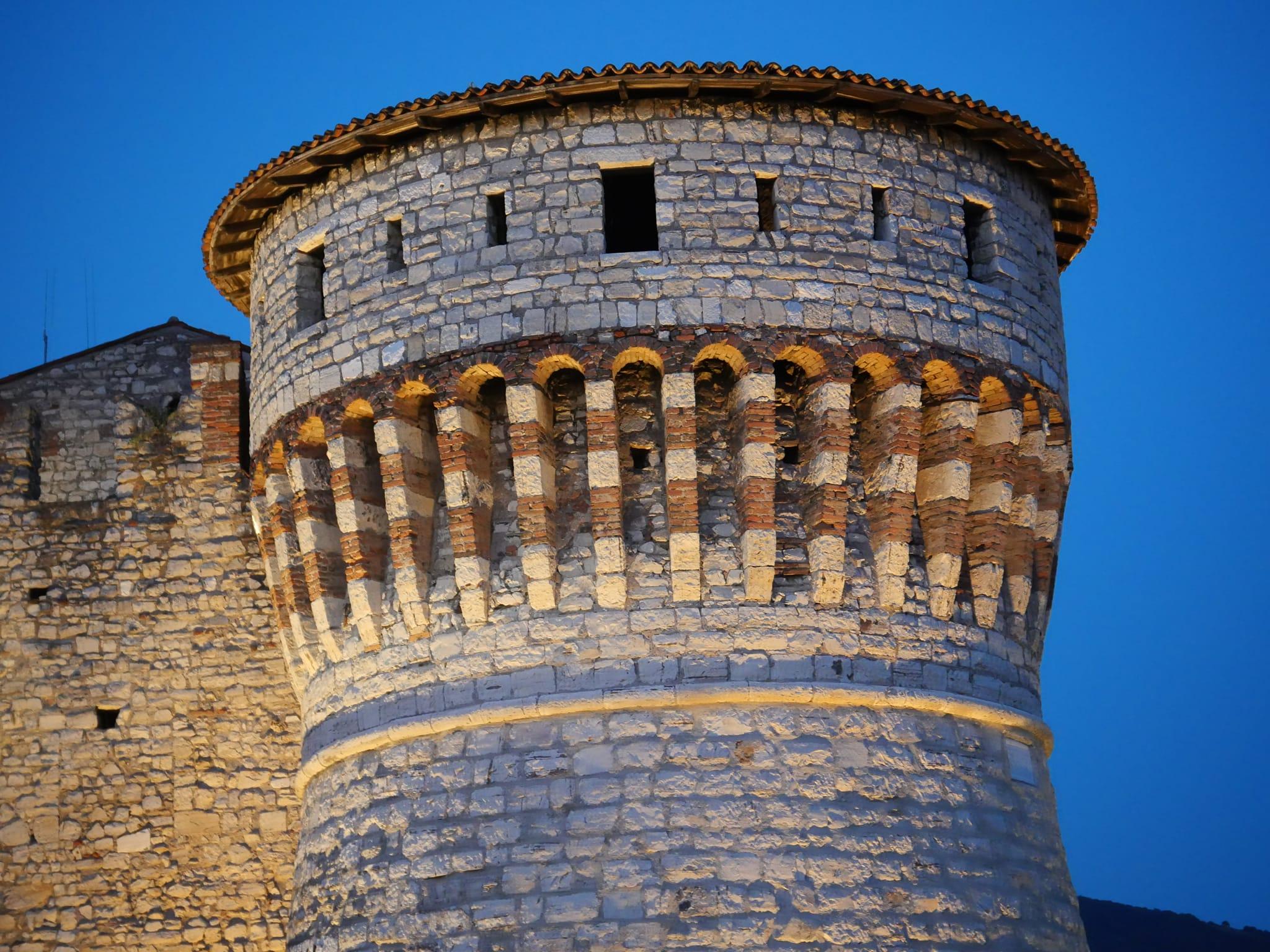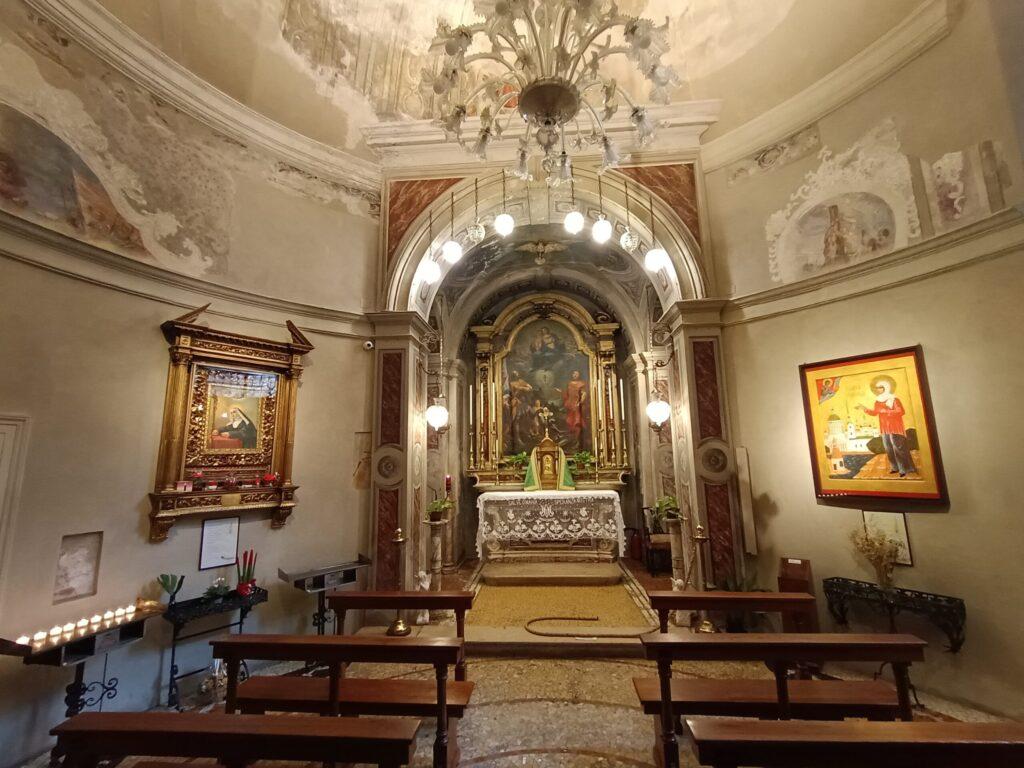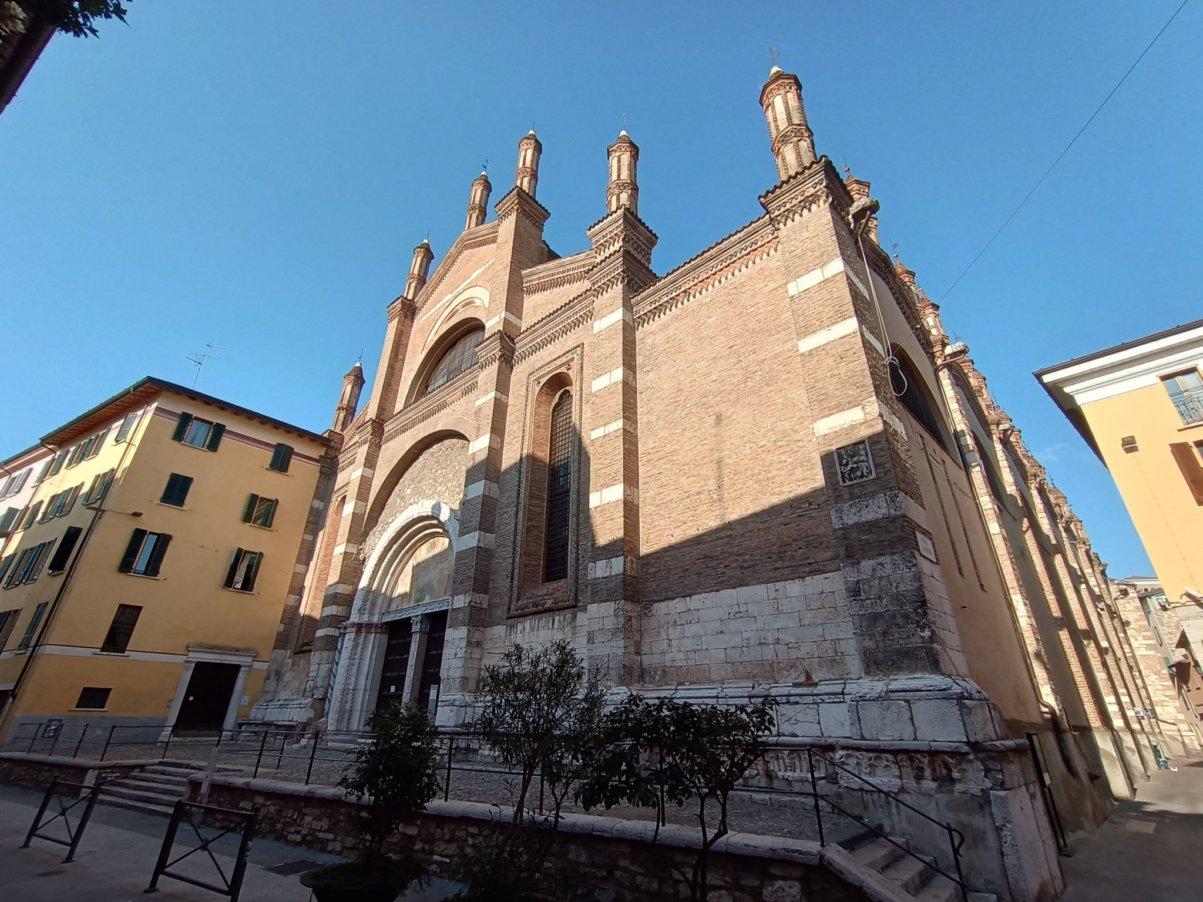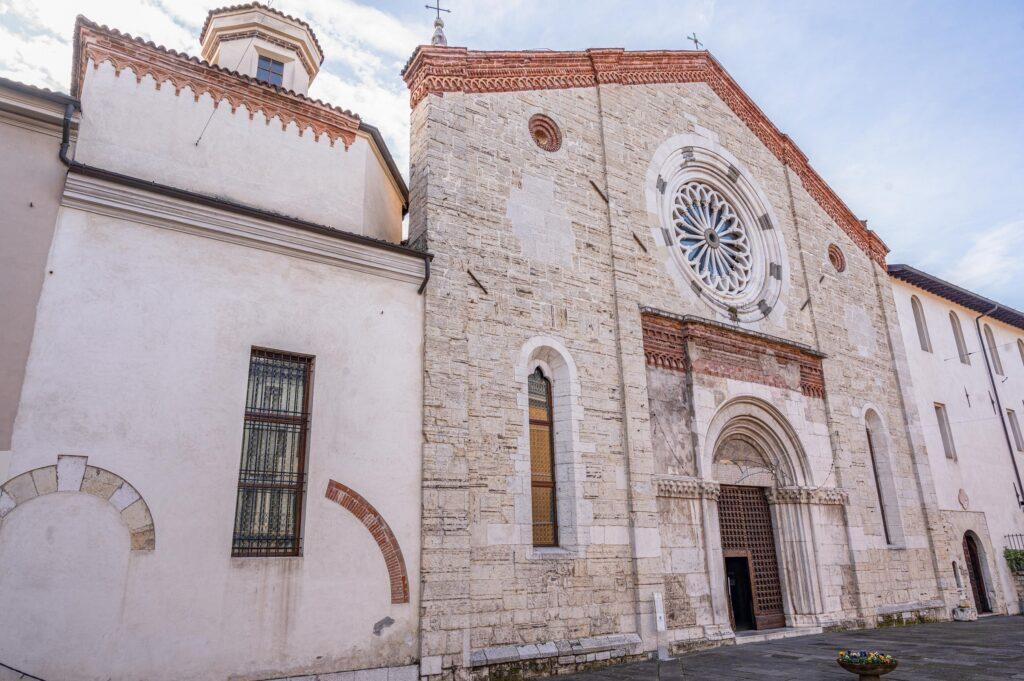The city of art of the Mille Miglia. Visit the largest Roman archaeological area in Northern Italy and discover the monumental remains of the Lombards, now a UNESCO World Heritage Site. Welcome to Brescia! Welcome to Brescia ‘The Culture Capital of Italy 2023’ with Bergamo!
The History of Brescia
Brescia is the custodian of a rich heritage of art and history from prehistoric times to the modern-day and heir to a culture of traditional crafts, industry, and trade which today puts it at the top of the Italian economic league. Brescia welcomes tourists with museums, shows, exhibitions, fine cuisine, shopping, nature, and sport. For a holiday that combines culture, relaxation, and enjoyment, it is the place to come.
The name Brescia is derived from Brixia whose Celtic root “brig” means hill. The first local settlement was made on the Cidnean Hill where the Castle stands today. A second high point that overlooks Brescia is Monte Maddalena (875 m high) whose summit can be reached via a panoramic road.
1200 B.C.The first settlement was made, probably by the Liguri tribe, on the Cidnean Hill. 4th c. B.C. The Gallic Cenomani tribe settled at the foot of the Cidnean Hill and made the town their centre. 89 B.C. Brixia became a Roman colony. 27 B.C. Emperor Augustus conferred the title “Colonia Civica Augusta” on the town.
Under the Roman Empire, the town became one of the main Cisalpine centres and took on growing importance as a trading and manufacturing centre. 568 – 773 The town was one of the 36 Lombard duchies in Italy.
774 – 888
The town passed into the hands of the Franks.
12th-13th
Comunale Period – Brescia was aGuelph town between the two Ghibelline towns of Bergamo and Cremona and was often involved in border fighting. Faced by the danger of Federico Barbarossa, it joined the Lombard League.
14th-15th
The Period of the Signorie was tumultuous for Brescia: the city was fought over by various families (Angioini, Visconti, Malatesta) who dominated it for different periods.
1426
Brescia became part of the Venetian Republic where it remained, with short breaks, for four centuries.
1797
After the rebellion in Venice, the Brescian Republic was established and became part of the Cisalpine Republic under the Treaty of Campoformio signed by Napoleon.
1814-1859
Brescia passed under the Lombard Veneto rule but in 1849 during the heroic “Ten Days”, which won it the name of the “Lioness of Italy”, it rebelled against the Austrians (who abandoned it 10 days later).
1859
Brescia was annexed into the Kingdom of Italy.
1943 – 1945
Salò became the capital of the Social Italian Republic which included Brescia until the fall of Fascism.
Roman Brescia
Roman Brescia is likely to be an unexpected pleasure for the visitor. Found right in the heart of the city is one of northern Italy’s most interesting archeological sites. Since the beginning of the 19th century public and private Roman buildings have been uncovered and restored to public view. The visitor can see the impressive remains of the Forum, the Capitoline Temple, the Theatre, and the Basilica as well as private houses with mosaics and frescoes (particularly impressive are the Domus del Ninfeo and the Domus dell’Ortaglia in the Museum of Santa Giulia).
In what is still called piazza del Foro (Forum Square) – the centre of Roman civil and religious life – the two main streets of the city crossed, the decumanus maximus (now via dei Musei) and the cardus (now via Agostino Gallo). The Forum was finally finished in the Flavian Era between 69 and 96 A.D. To the north of the Forum stands the Capitolium (Capitoline Temple) built by Emperor Vespasian in 73 A.D. In the Lapidarium on the ground floor tablets, altars and architectural fragments are displayed. The central cella is interesting for its collection of inscriptions mounted on the walls around 1830 and includes reproductions of some of the most important walled tablets in public and private buildings in the city and its province. To the south of the Forum stands the 1st century A.D. Basilica whose remains are still visibly embedded in the wall of a building in piazza Labus.
Just behind the Forum, and set slightly back with respect to via dei Musei, is the Theatre which was built in the 3rd century A.D. Although it was seriously damaged in an earthquake in the 5th century, it was still used afterward and public meetings were held there even in the Middle Ages. The Theatre was the third-largest in northern Italy after Verona and Pola and could hold fifteen thousand spectators. Today, the cavea and parts of the stage can be seen.
Important finds from the Roman Age, such as the bronze Vittoria Alata (Winged Victory), probably the best known ancient sculpture in north Italy, and the six large gilded bronze heads from the Imperial era, are kept in the Roman section of Santa Giulia. City Museum.
From the early Middle ages to the Gothic period
From the Roman Era we pass to the Middle Ages, or rather from piazza del Foro to via dei Musei. Via dei Musei is largely flanked by one of the most impressive early Middle Ages monastic buildings in north Italy, the Monastery of Santa Giulia, originally dedicated to San Salvatore. Founded by the Lombard king, Desiderius, on a site where there was once a Roman house, the monastery was continually enlarged up until the Renaissance. It was run by a community of Benedictine nuns until their suppression in 1798. The complex of buildings that mirrors Brescia history, houses Santa Giulia. City Museum where visitors can trace the history of the people living in the area of Brescia starting from the first settlements of the Bronze Age up to the Renaissance passing through the Roman Age and the Medieval one. The Longobard church of San Salvatore dates from the early Middle Ages. The church still preserves fragments of stucco and frescoes from the 11th century. During the 12th century, the church of Santamaria in Solario was built. Its octagonal lantern is decorated with a small loggia and small arches and can be seen from via dei Musei.
The Santa Maria in Solario church was used as an oratory by the nuns and was built on two floors.The lower floor houses the Lipsanoteca, a 4th c. decorated ivory box.The upper floor is decorated with 16th century frescoes by Floriano Ferramola and others and exhibits the Lombard Cross of Desiderius (a rare 9th century work in gold studded with cameos, gems and coloured glass and in whose centre a disk is set bearing a triple portrait from the 4th century). From the
second half of the 1400’s on, the monastery was enlarged and transformed until it assumed its current renaissance style architecture. Two of these additions were the three cloisters and the nuns’chancel in the church of S.Giulia, decorated with frescoes by Floriano Ferramola and Paolo da Caylina.
During the Middle Ages the civil and religious centre of the town moved from the Forum to what was then called piazza Mercato and what is now known as piazza Paolo VI. Around the sq. stand the Broletto which houses the city council administrative offices, the Duomo Vecchio and, situated between the two, the 18th c. Duomo Nuovo with its impressive façade. The Broletto is one of the most notable medieval Lombard structures and it is topped by the Tower of Pegol (the stone south face dates from the 13th c.) and has been expanded and rebuilt from time to time.
It now encompasses various other buildings, including the 15th c. church of St. Augustin whose beautiful brick façade can be seen in the lane of the same name.The Duomo Vecchio (Old Cathedral), also known as the Rotonda, is one of the few round Romanesque churches in Italy. Its unusual shape was probably based on that of the Holy Sepulchre in Jerusalem. Built at the end of the 11th c., it has an attractive interior with a large circular central area surrounded by a pillared walkway. Among the masterpieces in the cathedral is the Sarcophagus of Berardo Maggi (bishop of Brescia from 1298 to 1308 who managed to bring an end to the war between the Guelphs and Ghibellines) made in red Veronese marble, and the 16th c. wooden choir stalls, pictures by Moretti, Romanino and Marone.
On the rare occasions it is exhibited, the Treasure of the Holy Crosses can also be admired; it includes masterpieces in gold such as the 11th c. Stauroteca, the 15th c. Reliquary box holding a bfragment of the Holy Cross, and the 11th c. banner, the Croce del Campo, which was once borne on the Carroccio.
The Renaissance
Piazza Loggia is one of the most beautiful Venetian style squares outside of Venice itself. Its construction was initiated in 1433 by Marco Foscari, the Venetian mayor of Brescia, when it replaced a maze of lanes in the medieval city; its completion took over a century. Built around the square were the Loggia, the Monte Vecchio and Monte Nuovo di Pietà, and the porticoes surmounted by the Clocktower The Loggia was started in 1492 and finished circa 1570, it is a symbol of the city and main office of the City Council. Some of the greatest architects of the time helped in its design including Sansovino and Palladio. Its sculptural decoration in Botticino marble is particularly impressive.
The building’s original lead roofing was lost in a fire in 1575 which also destroyed the three large ceiling paintings by Titian. After a series of temporary solutions, the cupola seen today was built in 1914, inspired by the Renaissance model.
The 17th and 18th Centuries
Between the mid-17th and mid-18th centuries, several important buildings were constructed which are still features of the city today: the Teatro Grande, the Duomo Nuovo and the Queriniana Library. Also built during that period were the porticoes in via Dieci Giornate which are a favourite spot for window-shopping and promenading.
The Teatro Grande has been the centre of the city’s musical culture. The entrance to the theatre is in corso Zanardelli. Its façade dates from the end of the 18th century while the auditorium, with five levels of boxes, was renovated during the 19th century. Its foyer is especially beautiful, designed by Antonio Marchetti (1761-69) and decorated with mirrors, frescoes and stuccoes.
The Duomo Nuovo (New Cathedral) Situated between the Broletto and the Duomo Vecchio, the imposing white marble façade of the Duomo Nuovo dominates piazza Paolo VI. It took over two hundred years to complete, from 1604 to 1825: its dome is the third highest in Italy. Equally impressive is the interior where works by Moretto, Romanino and Palma the Younger can be seen, as well as important sculptures including the Renaissance sarcophagus of Sant’Apollonius. The Querinian Library – This collection is housed in a severe-looking building designed in the mid18th century by Antonio Marchetti; the collection was instituted at the wish of Cardinal Angelo Maria Querini, Arch-bishop of Brescia.
The reading rooms are very beautiful where the original book-cases and decorations have been preserved. There are over three hundred thousand volumes and important collections of manuscripts, codices and incunabola. Among the most valuable items is the 6th century Purple Evangeliary written in letters of silver and decorated in gold.
From NeoClassicism to the Twentieth Century
After 1800, the city’s appearance began to change: the city walls were no longer required for defensive purposes and were little by little dismantled and excavations begun which led to the discovery of the Capitoline Temple. The Corn Market in piazzale Arnaldo was one of the most important buildings during this period. The white stone colonnade demonstrates the neo-classical taste of the age and was raised to allow wagons to be loaded. Many large and imposing buildings were put up around 1800 that today are still part of Brescian life. For example, there is Casa Chiappa in piazza Paolo VI, a severe though origina example of neo-classicism; the Conservatory, in corso Magenta; and Palazzo Tosio in via Tosio, designed by the most famous architect of the day, Rodolfo Vantini, who also designed the city cemetery, and now the home of the Athenaeum and the Brescian Academy of Science, Literature and Arts.
Facts about Brescia
• The province of Brescia is the largest in Lombardy; its 4.782 km2 make up a fifth of the region.
• Brescia has 200.000 inhabitants and is the second largest city in Lombardy.
• The province of Brescia is one of the most important in Italy economically: it has been famous since the 15th century for its arms production and now is heavily industrialized particularly in the steel and engineering industries.
• There are three valleys in the province, Valcamonica with river Olio, Valtrompia with river Mella and Valsabbia with river Chiese and three lakes, Lake Garda, Lake Iseo and Lake
Idro.
What can you do during your stay at Brescia?
A few ideas …
A great variety of amenities and additional services are available for you to fully enjoy every single aspect of your trip. You’ll have everything for short and long stays, for business and entertainment.
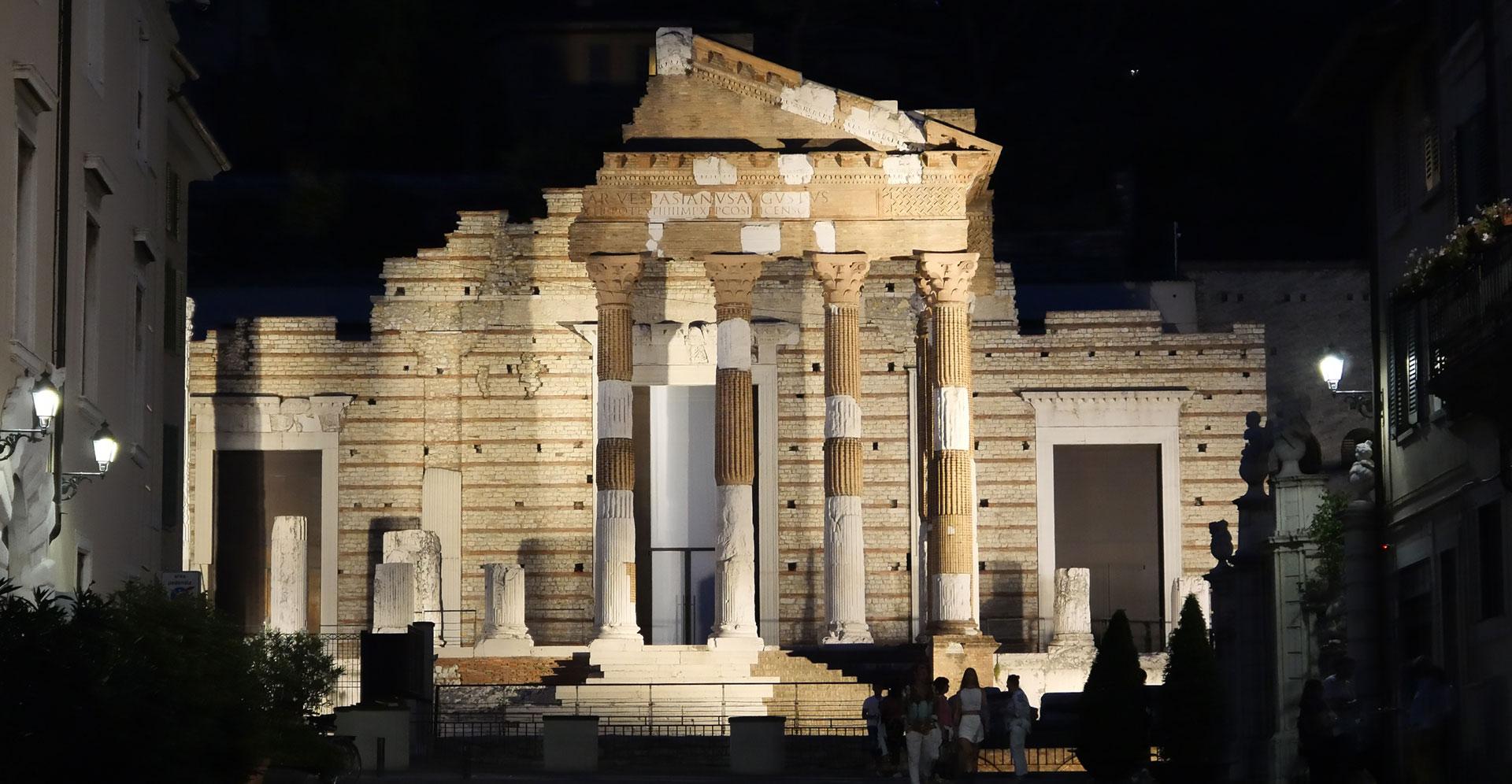
Piazza del Foro with the Capitolium and Palazzo Martinengo
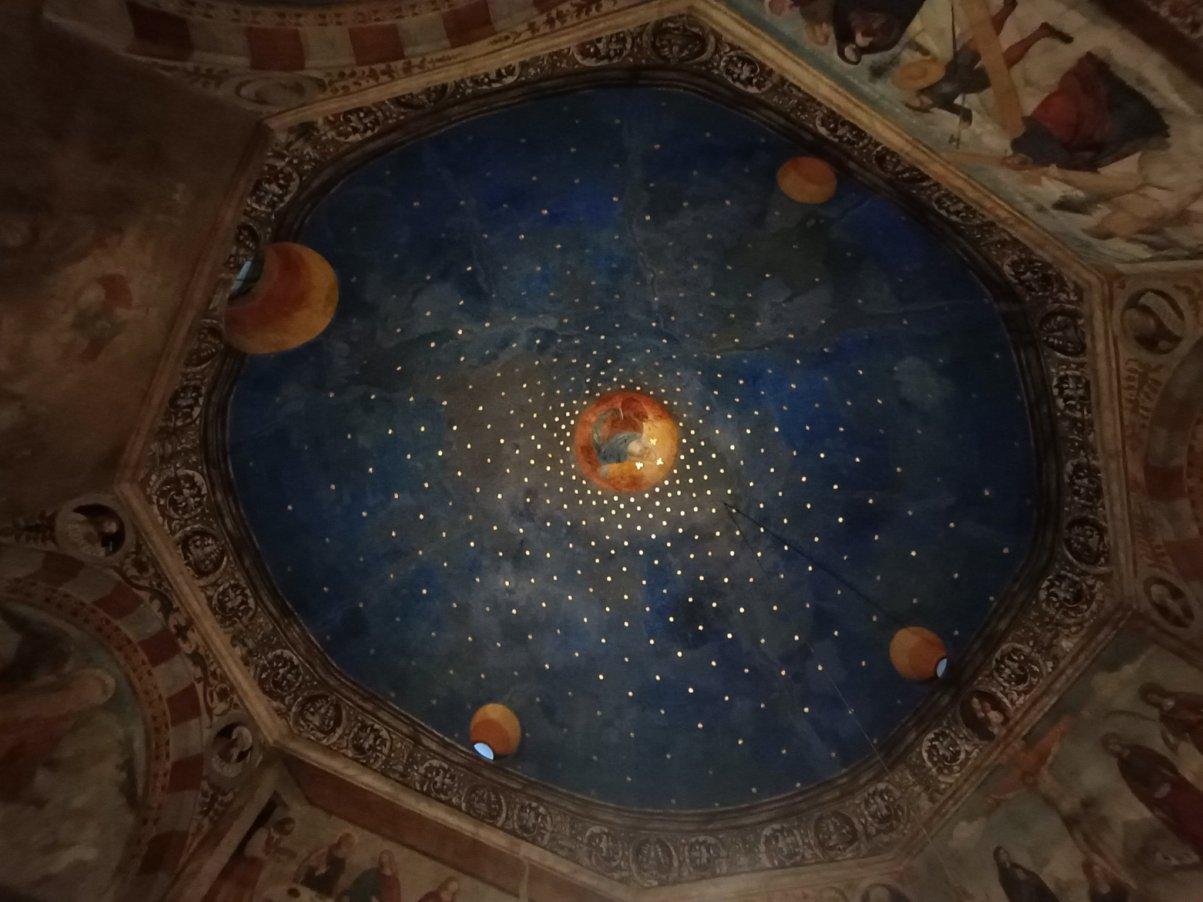
Santa Giulia City Museum (Monastery of Santa Giulia, S.Salvatore S.Maria in Solario)
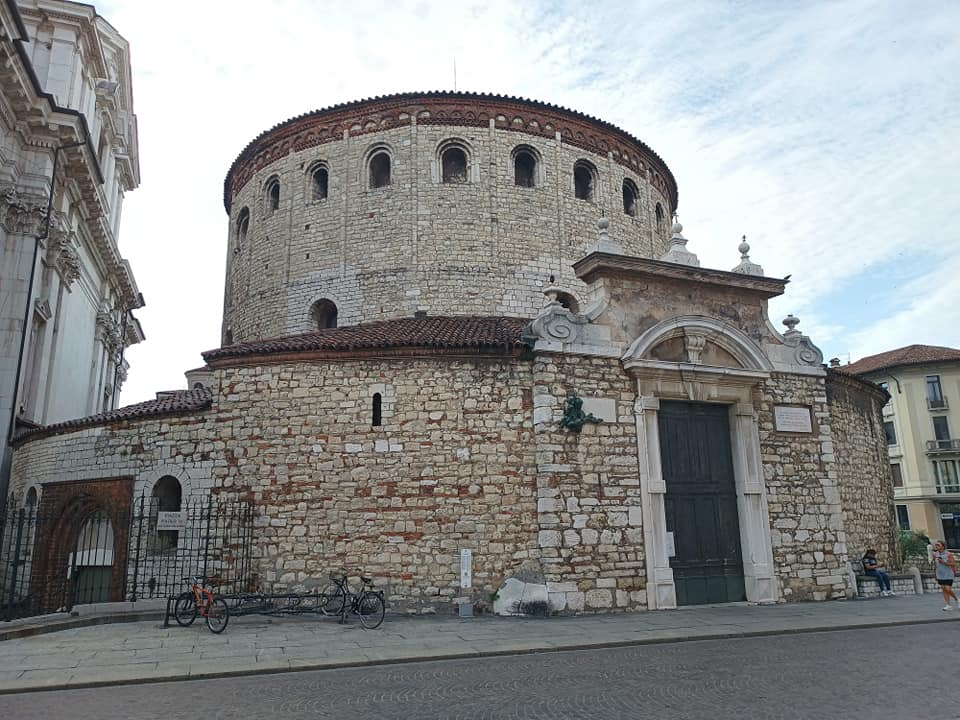
Piazza Paolo VI with the Broletto, Duomo Vecchio e Duomo Nuovo
